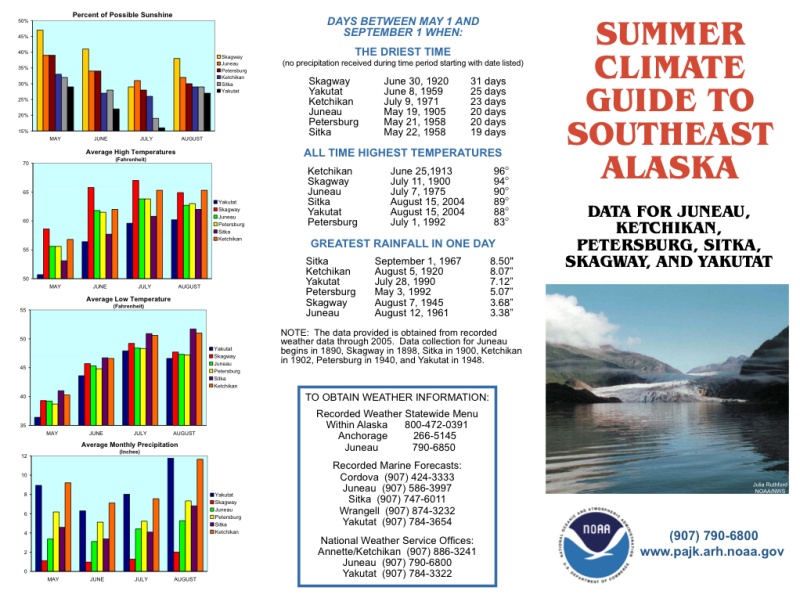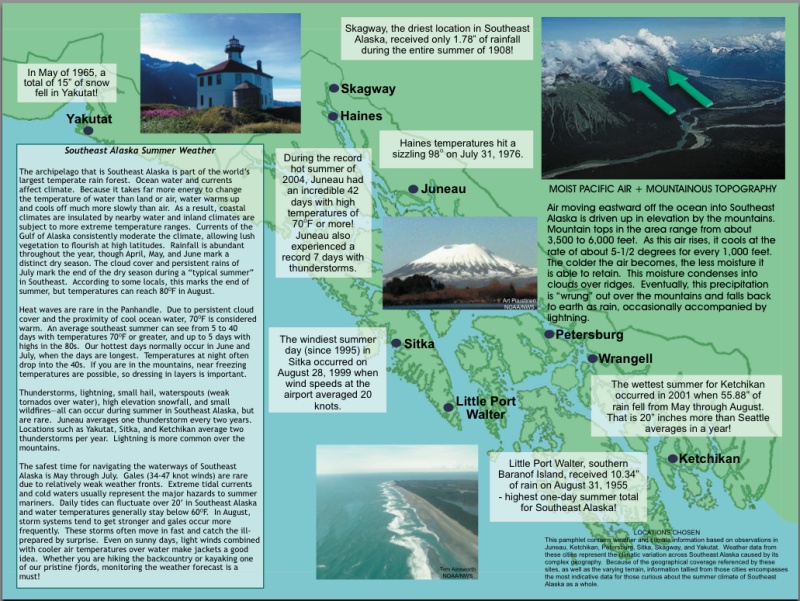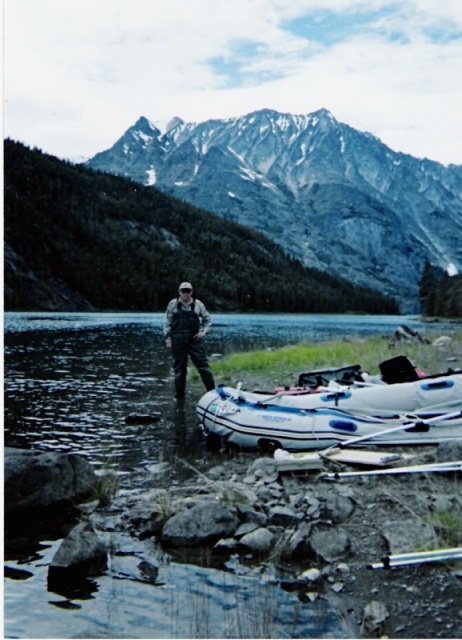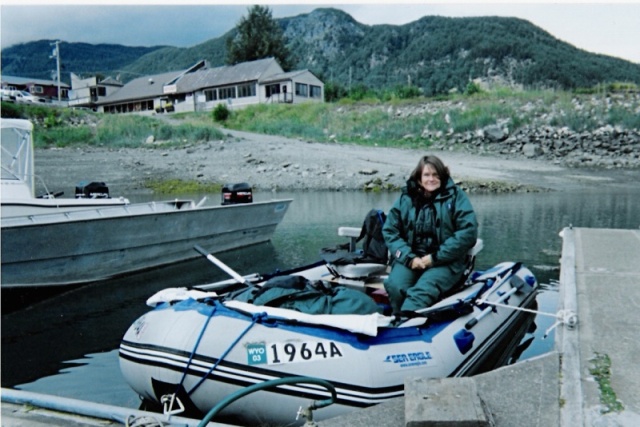| View previous topic :: View next topic |
| Author |
Message |
Larry H
Joined: 02 Nov 2003
Posts: 2041
City/Region: Tulalip,
State or Province: WA
C-Dory Year: 1991
C-Dory Model: 22 Cruiser
Photos: Nancy H
|
 Posted: Fri Feb 18, 2011 2:18 pm Post subject: Posted: Fri Feb 18, 2011 2:18 pm Post subject: |
 |
|
Check this out.

Page two

These images are in the Nancy H photo album.
_________________
Larry H

A C-Brat since Nov 1, 2003
Ranger Tug 27 ex 'Jacari Maru' 2017 - 2022
Puget Trawler 37 ex 'Jacari Maru' 2006-2017
1991 22' Cruiser, 'Nancy H'--1991-2006 |
|
| Back to top |
|
 |
Hunkydory
Joined: 28 Mar 2005
Posts: 2658
City/Region: Cokeville, Wyoming
State or Province: WY
C-Dory Year: 2000
C-Dory Model: 22 Cruiser
Vessel Name: Hunkydory
Photos: Hunkydory-Jay-and-Jolee
|
 Posted: Fri Feb 18, 2011 4:27 pm Post subject: Posted: Fri Feb 18, 2011 4:27 pm Post subject: |
 |
|
| rogerbum wrote: | I have a Mustang Integrity jacket and bib overalls. Both provide flotation and a good deal of insulation. While they are definitely not water tight, the water that does get in doesn't exchange very quickly with the outside environment. The combination has a "Clo value" of about 0.37. This will give me somewhere around 4 hours in the typical water temperatures in the Puget Sound (40-55F). If you keep a waterproof hand held VHF clipped to it or in the pocket (or better yet a Epirb/PLB), that should be sufficient for most boaters who are rarely more than a hour or two away from a coast guard station. The gumby suits are fairly impractical for doing much in them. The jacket/bib combination provides good comfort and mobility. Fishing with it on is no problem.
The real problem with any of these suits (IMHO) is when the air temperature gets above about 55F. All of them are well insulated and (of course) get quite warm when the air around you isn't cold. Hence there's some practical limitations to what you can wear full time and still enjoy the boat. For me, the bib/pants combo is ideal since I can take off the coat in warmer weather and replace it with self inflating pfd. Then I can comfortably operate in temps up to about 68F. After that, I have to shed the bibs.
The problem (of course) is the water temp is almost always below the air temp and if I fall in on a warm day, I'm not going to be well insulated. On the other hand, as long as the jacket and bibs are readily accessible, they don't take long to don so they are still very useful in emergency situations that don't involve a quick fall into the water. Unfortunately, most falls in are unexpected and often happen in calm water. Still, you won't see me in a gumby suit or my bib/jacket combination on a warm day - it's tradeoff between heatstroke while on board (the common and intended place for me) and hypothermia while in the water (the uncommon and unintended location). However, when I have to do something that is higher risk (like perhaps going foward along the side in rough weather to pull in a line etc), then I'll don the gear for a brief period of time to do so.
To me, I think one of the key issues is to be very deliberate about what one does on the boat to reduce the risk of falling out. For example
* I set my fenders up so they can all be easily deployed/stowed from the comfort of the cockpit without leaning over or going forward.
* I set up my down riggers up with long lines on the releases and I use a stick with a hook to retrieve them - I don't lean over to get to them.
* In water that is at anything but flat, no-one is allowed to relieve themselves over the side, they have to use the porta-potty (on the new boat the enclosed head).
* If someone is sea sick, they have to puke in a bucket in the cockpit rather than over the rail.
* My bow line terminates in the cockpit - I don't need to go forward to get it.
etc. etc.
My point is that there's many things one can do to significantly reduce the risk of unexpectedly exiting the boat and landing in the water and those things are probable as important as having gear on to prevent hypothermia. |
Roger, in my opinion very good practical advise post 
Both Jo-Lee and I have like you the Mustang jacket and bibs and have had them since 2001 when exploring rivers and lakes in British Columbia, Yukon and the Northwest Territories in a 12.5 foot RIB. Also works great for the CD22. Like you said easy to don and comfortable in the temp ranges you mentioned. Most including me won't wear whats not comfortable. We also had two Gumby suits that we have never brought with us. Just plain impractical in either the RIB or CD 22.
We don't wear our pfd all the time around the docks or boat and won't in the future. I too am an odd's person and am fine with the odd's in this case, but do wear the pfd or Mustang jacket and sometimes bibs when in a known more dangerous situation or when going forward on the bow to mess with the anchor or just along the outer side of the cockpit whether on the go, at anchor or at the dock and think others who like me don't care to wear them all the time should for sure wear them during the times I mentioned.
Here's a couple photos of Jo-Lee and me in 2001. Me in just Mustang bibs on Atlin Lake over 40 miles from the town of Atlin repairing a leak in the RIB and Jo-Lee in bibs and jacket during our stop in Haines, Alaska during our trip there and back from Skagway.


Jay
_________________
Jay and Jolee 2000 22 CD cruiser Hunkydory
I will not waste my days in trying to prolong them------Jack London
https://share.delorme.com/JuliusByers |
|
| Back to top |
|
 |
thataway
Joined: 02 Nov 2003
Posts: 20814
City/Region: Pensacola
State or Province: FL
C-Dory Year: 2007
C-Dory Model: 25 Cruiser
Vessel Name: thataway
Photos: Thataway
|
 Posted: Fri Feb 18, 2011 5:08 pm Post subject: Posted: Fri Feb 18, 2011 5:08 pm Post subject: |
 |
|
Why wear the life jacket? First, it will help prevent the first dangerous phase of cold water shock. It should keep the head above water, and avoid aspiration of water (leading to drowning, as part of the cold water shock-this includes a gasp reflex which aspirates water into the lungs, as well as the affect of cold water ceasing or markedly decreasing respiration). Some people will hyperventiallate, with shallow respiration (could lead to unconsiousness), others will be unable to hold their breath for more than a few seconds--again a reflex due to the cold water. Also if you have a good fitting vest type of type III PFD, it will also give you some cold protection of the torso. This does not totally remove the danger of high blood pressure (high peripheral vascular resistance due to vaso constriction)--but does help some. Also a lot of cold is lost thru the head (highly vascular scalp), and a head gear which helps to revent heat loss will also aid in this phase. The increased heart rate and arrythmias, as part of the reflex can also be reduced by decreasing the sudden cold reflex. All of these can lead to a heart attack and sudden death.
I have a personally built vest type of jacket, which has foam all around the torso, down over the upper abdomen and up into the collar. I have used it for many years--it is not stamped coast guard approved, but has over 22 lbs of floatation and gives me excellent rib protection and conservation of body temperature. If I have been in very cold weather I have worn it with an 1/8" neoprene wet suit vest, with hood--which helps further with the head and neck protection. A beaver tail (groin flap) would also greatly increase survival (as many float coats have).
I wonder if any of us are predisposed to develope the physiological response (if we had the time and inclination) to resist cold water effects by acclimation? I have jumped into icey water after a sauna etc when younger---but I would be reluctant to go into ice water unless under very controlled circumstances.
I certainly agree with the comments about survival suits--but one has to look carefully at both the type of insullation, water intrusion protection and full body protection (including hands and feet) as noted by several posters. The reality is that most of us will probably not wear such gear on the docks, unless we were working there. Yes, you would if fishing etc.
The mention was made of getting part of the body out of the water--this actually is of great benefit. Water conducts heat away from the body at almost 30x the amount as air does. So just getting your upper body out of the water would markedly increse survival.
The H.E.L.P. (heat escape llessening posture) position: This minimizes any activity, with hugging your arms against your sides and across your chest, with legs tight together and up toward your chest as much as possible-and must be used with a good floatation device. This position decreases your body surface exposed to the coldest water outside of the area of your "Hug".
Some tables from Minnesota sea grant site on hypothermia:
Water Temperature Expected Time Before Exhaustion and survival
(°F)temp Time before exhaustion Time or survival
32.5° ----- < 15 minutes --------------- 45 minutes
32.5–40----- 15 – 30 minutes ------------- 30 – 90 minutes
40–50°------ 30 – 60 minutes -------------- 1 – 3 hours
50–60° ----- 1 – 2 hours -------------------- 1 – 6 hours
60–70° ---- 2 – 7 hours --------------------- 2 – 40 hours
70–80° ----- 3 – 12 hours ------------------- 3 hours – indefinite
> 80° ---- Indefinite ------------------------ Indefinite
Situation & Equipment Predicted Survival Time in 50° F Water
Without flotation device
Drown proofing 1.5 hours
Treading Water 2 hours
With personal flotation device (e.g. vest or collar-type PFD)
Swimming 2 hours
Holding Still 2.7 hours
H.E.L.P. position 4 hours
Huddling with others 4 hours
With hypothermia prevention equipment
Insulated flotation jacket (float coat) 3 – 9 hours
Survival Suit indefinite
_________________
Bob Austin
Thataway
Thataway (Ex Seaweed) 2007 25 C Dory May 2018 to Oct. 2021
Thisaway 2006 22' CDory November 2011 to May 2018
Caracal 18 140 Suzuki 2007 to present
Thataway TomCat 255 150 Suzukis June 2006 thru August 2011
C Pelican; 1992, 22 Cruiser, 2002 thru 2006
Frequent Sea; 2003 C D 25, 2007 thru 2009
KA6PKB
Home port: Pensacola FL |
|
| Back to top |
|
 |
|
|
You cannot post new topics in this forum
You cannot reply to topics in this forum
You cannot edit your posts in this forum
You cannot delete your posts in this forum
You cannot vote in polls in this forum
You cannot attach files in this forum
You cannot download files in this forum
|
|

 Search
Search Private Messages
Private Messages Profile
Profile Log in
Log in Register
Register Help
Help






